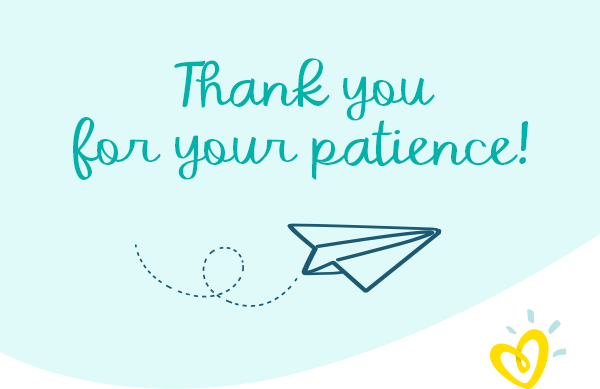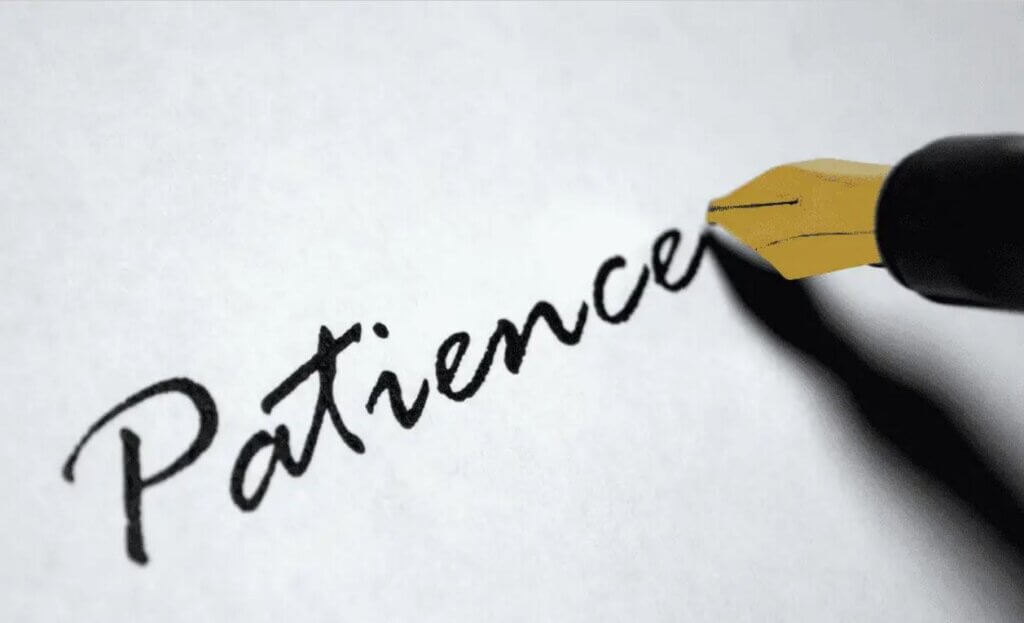Thank you for your patience email template
Introduction
In today’s fast-paced world, people have a lot of expectations regarding timely responses and deliveries. However, delays and inconveniences are sometimes inevitable, and this is where acknowledging and thanking your customers, colleagues, or clients for their patience becomes crucial. A well-crafted “Thank You for Your Patience” email helps build and maintain relationships and demonstrates professionalism and accountability. This article will discuss how to write an effective “Thank You for Your Patience” email template for various situations.
Expressing Gratitude
Expressing gratitude is essential to writing a “Thank You for Your Patience” email. It is necessary to make the Recipient feel valued and appreciated for their understanding. This section will discuss effectively expressing gratitude in a “Thank You for Your Patience” email template.
Thanking the Recipient:
The first step in expressing gratitude is to thank the Recipient for their patience. This simple gesture can go a long way in showing the Recipient that their time and effort are appreciated. A genuine and heartfelt thank you can make the Recipient feel heard and acknowledged.
Acknowledge their Patience:
In addition to thanking the Recipient, it is also important to acknowledge their patience. It is essential to recognize the effort and to understand what the Recipient has shown during the delay or inconvenience. Acknowledging their patience shows the Recipient that you understand their perspective and appreciate their willingness to wait.
Personalization:
One way to express gratitude is by personalizing the email. This could be done by addressing the Recipient by name and using a tone specific to the situation. Personalization shows the Recipient that the email is not a generic response but a thoughtful message crafted specifically for them.
Positive Language:
Positive language is another way to express gratitude in a “Thank You for Your Patience” email. Positive language can create a sense of goodwill and positivity. By using positive language, you can make the Recipient feel appreciated and valued.
Empathy:
Lastly, empathy is an essential aspect of expressing gratitude. Empathy is the ability to understand and share the feelings of others. By showing empathy, you can create a sense of connection with the Recipient. This can help to build trust and improve the overall relationship.
Sample Email Template:
Here is an example of how to express gratitude in a “Thank You for Your Patience” email:
Dear [Recipient],
I wanted to take a moment to express my sincere gratitude for your patience during [reason for delay or inconvenience]. We understand your time is valuable and we appreciate your willingness to wait.
Your understanding and cooperation have been invaluable to us. It is not easy to wait during a delay or inconvenience, but your patience has made it easier for us to resolve the issue.
Your willingness to wait demonstrates your commitment to our relationship, and we are grateful for your loyalty. We recognize that we would not be where we are today without customers/colleagues/clients like you.
Thank you once again for your patience and understanding.
Sincerely, [Your Name]
Expressing gratitude is essential to a “Thank You for Your Patience” email. It is necessary to make the Recipient feel valued and appreciated for their understanding. By thanking the Recipient, acknowledging their patience, personalizing the email, using positive language, and showing empathy, you can create a sense of goodwill and improve the overall relationship. Using the sample email template and tips in this section, you can effectively express gratitude in a “Thank You for Your Patience” email.
Explanation
In a “Thank You for Your Patience” email, explaining the delay or inconvenience is essential. This email section should be honest and transparent while avoiding making excuses or blaming others. In this section, we will discuss how to effectively explain the reason for the delay or inconvenience in a “Thank You for Your Patience” email template.
Reason for Delay or Inconvenience:
The first step in explaining the reason for the delay or inconvenience is to provide a clear and concise explanation. It is essential to be transparent and avoid making excuses. This will help to build trust and credibility with the Recipient. You may also want to provide details on your steps to resolve the issue.
Apologize:
After explaining the delay or inconvenience, the next step is to apologize. It is essential to take responsibility for the delay or inconvenience and show empathy towards the Recipient. A sincere apology can go a long way in making the Recipient feel heard and acknowledged.
Accept Responsibility:
It is important to accept responsibility for the delay or inconvenience. This can help to build trust and demonstrate accountability. You are committed to resolving the issue and improving the relationship.
Provide a Solution:
In addition to providing an explanation and apologizing, it is essential to give a solution to the problem. This could be providing additional information, a discount, a complimentary service, or an alternative solution. Providing a solution shows the Recipient that you are committed to resolving the issue and improving their experience.
In a “Thank You for Your Patience” email, explaining the delay or inconvenience is essential. By providing a clear and concise answer, apologizing, accepting responsibility, and providing a solution, you can demonstrate professionalism, accountability, and a commitment to resolving the issue. By using the sample email template and the tips provided in this section, you can effectively explain the reason for the delay or inconvenience in a “Thank You for Your Patience” email.
Apology
Apologizing is critical to a “Thank You for Your Patience” email. When there is a delay or inconvenience, it can cause frustration and disappointment for the Recipient. In such cases, a sincere apology can go a long way in showing the Recipient that their concerns are heard and acknowledged. This section will discuss effectively apologizing in a “Thank You for Your Patience” email template.
Sincere Apology:
The first step in apologizing is to offer a sincere apology. Recognizing the Recipient’s frustration and acknowledging the impact of your inconvenient fence is essential. A sincere apology can show empathy and help to build trust with the Recipient.
Accept Responsibility:
In addition to apologizing, accepting responsibility for the delay or inconvenience is essential. This shows the Recipient that you are taking ownership of the situation and are committed to finding a solution. Accepting responsibility also helps to demonstrate accountability and build trust with the Recipient.
Avoid Deflecting Blame:
When apologizing, it is essential to avoid deflecting blame. Blaming others or making excuses can undermine the sincerity of the apology and may cause the Recipient to feel unheard or dismissed. Instead, focusing on what can be done to resolve the situation is essential.
Provide a Solution:
In addition to offering a sincere apology and accepting responsibility, it is essential to solving the problem. This could be by offering a discount, additional information, or an alternative solution. Providing a solution shows the Recipient that you are committed to resolving the issue and improving their experience.
Follow Up:
Lastly, it is crucial following the Recipient to offer an apology. This shows t is essential that you are committed to resolving the issue and improving the overall relationship. Following up can also provide an opportunity to gather feedback and learn from the experience.
Final Words of Appreciation:
The first step in concluding a “Thank You for Your Patience” email is to offer final words of appreciation. This could be by thanking the Recipient for their patience and understanding or expressing gratitude for their loyalty and support. Last words of appreciation can leave a positive impression on the Recipient and demonstrate your commitment to maintaining the relationship.
Offering Help or Assistance:
In addition to offering final words of appreciation, it is essential to help or assist the Recipient. This could be providing additional information, offering a discount or a complimentary service, or offering an alternative solution. Help or aid shows the Recipient that you are committed to resolving the issue and improving their experience.
Call to Action:
A call to action is optional in a “Thank You for Your Patience” email. A call to action could be a request for feedback or a suggestion for improvement. This not only Recipient that you value now e their opinion but also provides unity to learn and grow from the experience.
In a “Thank You for Your Patience” email, an essential component should summarize the key points and reiterate the importance of the Recipient’s patience and understanding. By offering final words of appreciation and assistance in action, you can leave a positive impression on the Recipient and demonstrate your commitment to maintaining the relationship. You can effectively conclude a “Thank You for Your Patience” email using the sample email template and the tips provided in this section.
Sample Email Template
A “Thank You for Your Patience” email is crucial in maintaining positive relationships with customers, clients, or colleagues. A well-crafted email can help express gratitude, explain, apologize for the delay or inconvenience, and offer a solution. InThisection, ill provide a sample email template for a “Thank You for Your Patience” email that incorporates all these critical components.
Subject Line:
“Thank You for Your Patience – [Brief Description of the Delay or Inconvenience]”
Salutation:
Dear [Recipient],
Introduction:
I wanted to take a moment to thank you for your patience during [brief description of the delay or inconvenience]. We understand this may have caused frustration and inconvenience, and we appreciate your willingness to wait.
Explanation:
[Provide a clear and concise explanation for the delay or inconvenience. Be honest and transparent while also avoiding making excuses or blaming others. Provide details on the steps you are taking to resolve the issue.]
Apology:
We want to take full responsibility for this delay/inconvenience and assure you that we are doing everything possible to resolve the issue. We sincerely apologize for any frustration or inconvenience this may have caused.
Solution:
[Provide a solution to the problem. This could be providing additional information, a discount or complimentary service, or an alternative solution. This shows the Recipient that you are committed to resolving the issue and improving their experience.]
Express Gratitude:
As a token of our appreciation, we would like to offer you [offer of assistance]. We value your business/relationship and appreciate your patience and understanding.
Closing:
If you have further concerns or questions, please do not hesitate to contact us. Once again, we would like to express our sincere gratitude for your patience and understanding during [brief description of the delay or inconvenience].
Sincerely, [Your Name]
A “Thank You for Your Patience” email is essential in maintaining positive relationships with customers, clients, or colleagues. Using the sample email template above and incorporating all the critical components, you can effectively express gratitude, explain, apologize for the delay or inconvenience, offer a solution, and maintain a positive relationship. Remember to be sincere and transparent in your communication, and always show empathize Recipient.
Tips for Writing a Thank You for Your Patience Email
Writing a “Thank You for Your Patience” email can be challenging, especially when dealing with a delay or inconvenience that has caused frustration or disappointment for the Recipient. This section will discuss some tips for writing a “Thank You for Your Patience” email that expresses gratitude, explains, apologizes for the delay or inconvenience, and offers a solution.
Be Sincere:
When writing a “Thank You for Your Patience” email, it is essential to be sincere. The Recipient can easily sense when an email is insincere or generic. An open email expresses empathy and acknowledges the Recipient’s concerns.
Keep it Short and Concise:
A “Thank You for Your Patience” email should be short and concise. Avoid using unnecessary jargon or technical terms that the Recipient may not understand. Keep the language simple.
Provide Details:
Providing details can help to explain the reason for the delay or inconvenience. This can help the Recipient understand the situation and alleviate any frustration they may have experienced. Be honest and transparent in your communication.
Avoid Excuses:
When writing a “Thank You for Your Patience” email, it is essential to avoid making excuses. Instead, focus on taking responsibility for the situation and providing a solution. Excuses can undermine the sincerity of the email and may cause the Recipient to feel unheard or dismissed.
Offer a Solution:
Providing a solution is an essential component of a “Thank You for Your Patience” email. This could be providing additional information, a discount, a complimentary service, or an alternative solution. This shows the Recipient that you are committed to resolving the issue and improving their experience.
Follow Up:
Following up with the Recipient after sending a “Thank You for Your Patience” email can help to maintain a positive relationship. This can be in the form of a phone call or a follow-up email. Following up shows the Recipient that you are committed to resolving the issue and improving their experience.
Writing a “Thank You for Your Patience” email can be challenging. Still, following the tips above, you can effectively express gratitude, explain, apologize for the delay or inconvenience, and offer a solution. Remember to be sincere and transparent in your communication, and always show empathy emexpandtthisB others using the sample email template and the tips provided in this section.
Conclusion
It is essential to send a “Thank You for Your Patience” email. The decision of the email should summarize the key points and reiterate the importance of the Recipient’s patience and understanding. This section will discuss effectively concluding a “Thank You for Your Patience” email template.
Final Words of Appreciation:
The first step in concluding a “Thank You for Your Patience” email is to offer final words of appreciation. This could be by thanking the Recipient for their patience and understanding or expressing gratitude for their loyalty and support. Last words of appreciation can leave a positive impression on the Recipient and demonstrate your commitment to maintaining the relationship.
Offering Help or Assistance:
In addition to offering final words of appreciation, it is essential to help or assist the Recipient. This could be providing additional information, offering a discount or a complimentary service, or offering an alternative solution. Help or aid shows the Recipient that you are committed to resolving the issue and improving their experience.
Call to Action:
A call to action is optional in a “Thank You for Your Patience” email. A call to action could be a request for feedback or a suggestion for improvement. This lets the Recipientknows know that you value their opinion but provides unity for them to learn and grow from the experience.
F.A.Q
How do you thank someone for being patient?
Expressing gratitude and appreciation for someone’s patience is essential to maintain positive relationships and showing that their understanding and waiting are valued. Here are some ways to thank someone for being patient:
- Start with a sincere thank you: Begin by expressing your gratitude for their patience. You could say, “Thank you so much for your patience,” or “I appreciate your patience more than you know.”
- Acknowledge the inconvenience: Recognize that waiting can be frustrating and inconvenient, and acknowledge that the person may have had other plans or responsibilities.
- Explain the situation: Provide a brief explanation of the problem that required their patience, such as an unexpected delay, a technical issue, or a scheduling conflict.
- Apologize if necessary: If an error caused the situation on your part or the company’s part, apologize for any inconvenience caused.
- Show empathy and understanding towards the person for waiting, and acknowledge any difficulties they may have experienced.
- Offer thanks and appreciation: Conclude by expressing your gratitude and like again, and let them know that their patience was not taken for granted.
Some examples of how to thank someone for being patient could be:
- Thank you for being so patient while we worked to resolve the issue. Your understanding and flexibility meant a lot to us.
- I know waiting can be frustrating, but I appreciate your patience and understanding during the delay. Thank you for being so understanding.
- Your patience was greatly appreciated during the technical difficulties we experienced. We couldn’t have resolved the issue without your understanding and cooperation.
- I apologize for the delay and any inconvenience caused.
- Thank you for your patience and support during this challenging situation. Your kindness and patience have not gone unnoticed, and we genuinely appreciate it.
How do you say thank you for your patience and understanding?
If you want to express gratitude and appreciation for someone’s patience and understanding, here are some ways to say “thank you”:
- Your willingness to wait and your account mean a lot to me.
- I appreciate your patience and understanding more than you know. It has made a difficult situation much easier to handle.
- Your patience and understanding during this time have been invaluable to me. I can’t thank you enough for your support and understanding.
- Thank you for being so patient and understanding. It means a lot that you are willing to work through this with me.
- I am grateful for your patience and understanding during this situation. Your willingness to wait and experience have not gone unnoticed; I genuinely appreciate it.
- I know waiting can be frustrating, but your positive attitude and support have made all the difference.
- Your patience and understanding during this time have comforted me greatly. Thank you for being so kind and understanding.
Remember to be sincere and specific in your expression of gratitude. Let the person know how their patience and understanding have helped you and how much you appreciate their support.






